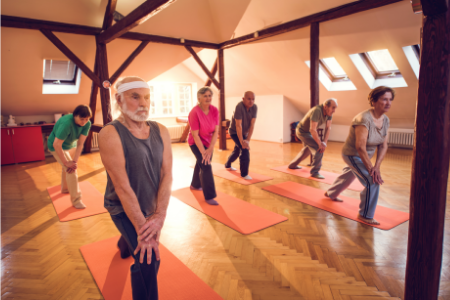- Is an arthroplasty the same thing as a joint replacement?

- What joint arthroplasty procedures are available today?
- What happens during the arthroplasty procedure?
- What’s it like to recover from the arthroscopy procedure?
- Are you a candidate for arthroplasty?
If you suffer from joint-related pain stemming from arthritis, at some point you may be a candidate for a joint replacement procedure. This orthopedic surgical procedure serves to remove, repair, and replace a damaged joint. In many cases, the joint surface is replaced with a fully functioning prosthesis.
This blog will help you know when joint replacement becomes an option. You’ll learn some of the terminology surrounding these joint surgeries and even what types of joints can be replaced. But let’s start with the basics: What is the difference between arthroplasty and joint replacement?
Is an Arthroplasty the Same Thing as a Joint Replacement?
Within the medical profession, plasty means, “a surgical procedure for the repair, restoration, or replacement (as by a prosthesis) of a part of the body.” Arthro, in turn, is Greek for joint. Together, these make up the word arthroplasty, which is the medical term describing joint replacement and repair procedures. It gets confusing, however, because joint replacement is used interchangeably with the word arthroplasty.
So in short, yes, an arthroplasty is the same procedure as a joint replacement. It can be called replacement arthroplasty, joint replacement surgery, joint replacement, or even just arthroplasty—but as you’ll see, they all mean the same thing.
Total joint arthroplasty is one of the most successful medical procedures available today. As technology and science continues to progress, these procedures are becoming less invasive and even safer and more effective. These days, most arthroplasty procedures are minimally invasive, which means that the incisions doctors use are smaller. This means patients recover faster with less pain and fewer complications.
What Joint Arthroplasty Procedures Are Available Today?
 Joint Replacement could, in theory, happen anywhere a joint exists, where two sets of bones come together in a kind of hinge that allows the two pieces to move together. However, when it comes to arthroplasty, hip and knee joint replacement procedures are the most common. Orthopedic surgeons also perform joint replacements on:
Joint Replacement could, in theory, happen anywhere a joint exists, where two sets of bones come together in a kind of hinge that allows the two pieces to move together. However, when it comes to arthroplasty, hip and knee joint replacement procedures are the most common. Orthopedic surgeons also perform joint replacements on:
- Ankles
- Elbows
- Shoulders
- Wrists
Think of all the wear and tear these joints experience every day during your normal activities. Now imagine 50 years of flexing and bending and putting weight on a joint, and you’ll understand how they can wear out drastically over time. Whether from injury, disease, or just simple aging, the joint can deteriorate and fail to function properly. Joint replacement is designed to eliminate pain and restore normal function to the joint.
What Happens During the Arthroplasty Procedure?
Some procedures can be done in a single day, and your healthcare providers will have you up and walking out of the surgery hospital within just a number of hours.
Thanks to anesthesia, joint replacement is also fairly painless. During the arthroplasty, no matter the joint the doctor is working on, the procedure consists of:
- Surgically opening the skin
- Removing the damaged parts of the joint
- Cleaning up the bone that seats into the joint
- Placing an individually designed prosthesis in place
- Flexing the joint to be sure it flows smoothly
- Closing the incision
Preparing, undergoing, and rehabilitating from arthroplasty is hard work, but the result is worth it. Not only will you have a functioning joint, but you will also experience reduced pain as you return to your normal activities.
What’s It Like to Recover From the Arthroplasty Procedure?
While there are some recovery nuances between the types of joints doctors replace, the basic process of rehabilitating from arthroplasty is the same.
First, you will be up and moving the day of the procedure.
You will have daily exercises to help you regain joint mobility, strength, flexibility, and balance.
During this period, you will also use medical assistance devices to get around. This could include a cane, a walker, or crutches. You’ll have prescription-strength pain medications at first, but you can quickly graduate to over-the-counter pain relievers.
Depending on the type of joint replacement you have, your recovery could take anywhere from weeks to a year. However, every person is different. Key to this process is to follow your doctor’s instructions to the letter. The exercises are designed to get the joint functioning properly by gradually increasing the amount of work and stress you put on the joint.
Many patients will undergo physical therapy for up to six weeks after surgery. You won’t be able to participate in strenuous contact sports for months, but walking and bike-riding are definitely on the agenda from the very beginning of your rehabilitation.
Are You a Candidate for Arthroplasty?
Arthroplasty is a major surgery, so your doctor will work closely with you to try other less-invasive ways of coping with the pain of a worn-out joint. These treatments could include:
- Anti-inflammatories
- Exercise
- Over-the-counter pain relief
- Pain medications
- Steroids
- Walking aids
Should these nonsurgical treatment options fail to offer relief, arthroplasty may be the best decision you ever make.
The team at Travis Clegg, M.D. Orthopedic Surgery can help you evaluate and decide whether arthroplasty is right for you. Talk with our team today about your joint pain treatment options.

